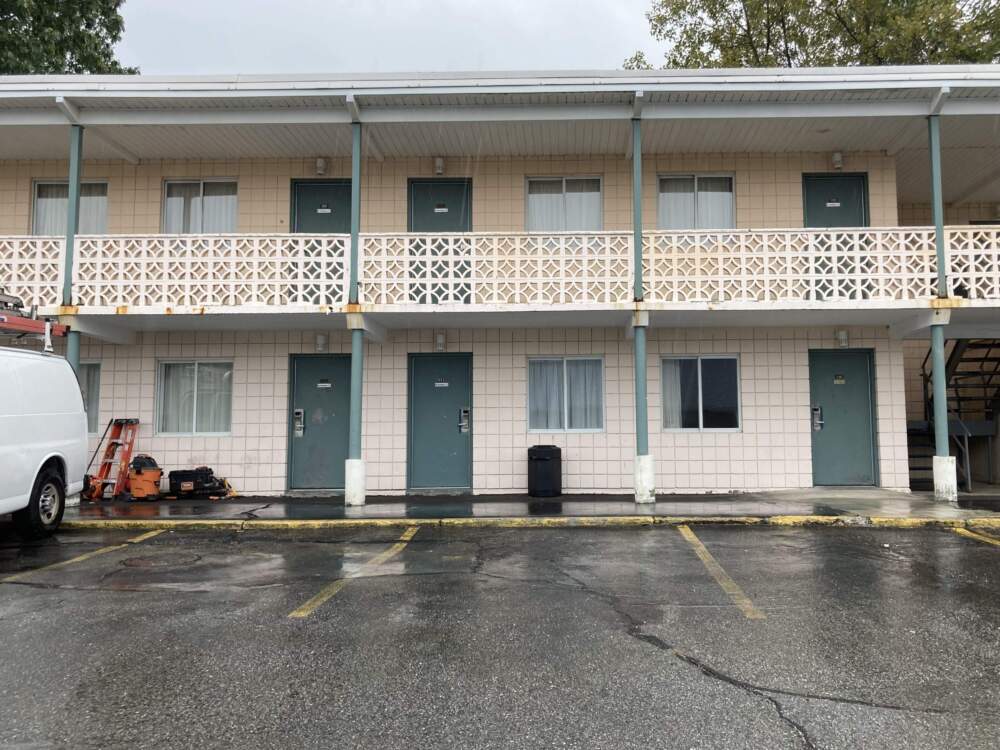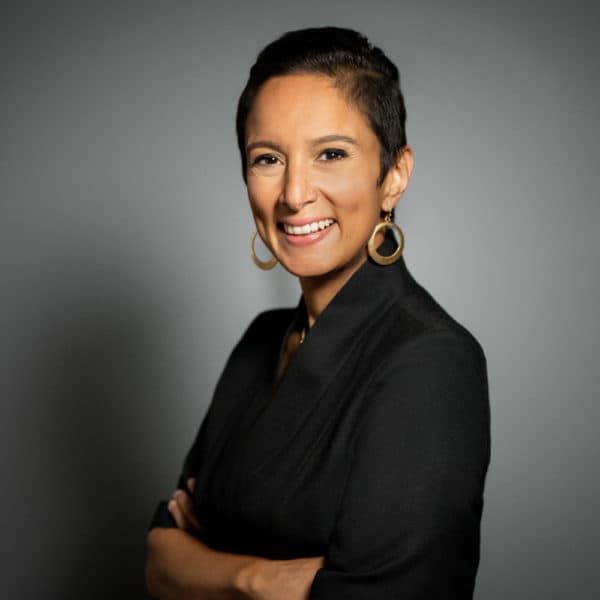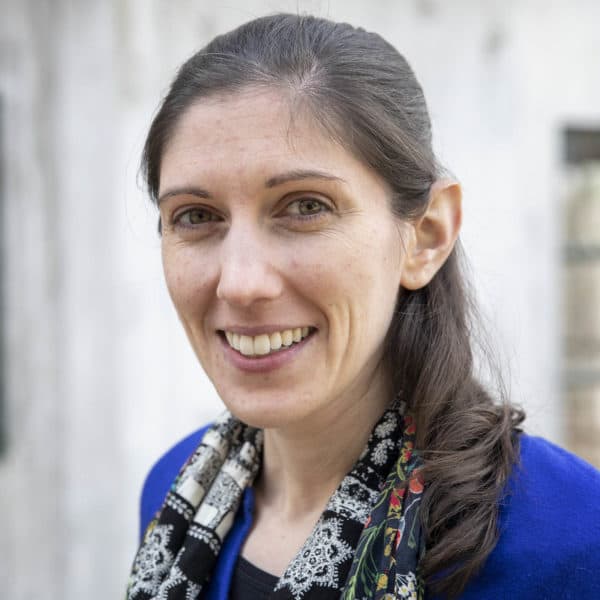Advertisement
Nearing capacity in shelter system, Mass. prepares to start waitlisting families
Resume
The Massachusetts family shelter system could enact new restrictions as early as next week, ending a 40-year guarantee to provide emergency housing for all qualifying families in need.
During a meeting with aid groups Thursday, state officials outlined plans to begin placing families eligible for shelter on a waitlist, according to several people present at the briefing. A Boston legal advocacy group filed a lawsuit Friday challenging the move.
Advocates said state officials expressed hope that federal officials would provide sites where families can stay while they wait, but it was unclear what — if anything — would be available.
As families leave the shelter system, new families can take over the vacant units. Advocates said approximately 10 families leave the system each day, but far more arrive seeking shelter. In just the past 24 hours, 48 families have entered the system.
State officials said they are transitioning to a waitlist because the shelter population has ballooned over the past year, and the system is running out of space and money. If the state doesn't cap the program at 7,500 households, officials told advocates, by the end of June, the shelter population is projected to top 13,000 families.
Starting Nov. 1, state officials plan to take steps including a new screening process designed to determine priority on the waitlist. State officials said they will continue placing families into the shelter system until it is serving 7,500 families. They will then begin placing families on a waitlist. As of Thursday, the system was serving some 7,256 households.
The emergency assistance shelter system, which was created in response to a state law, has never used a waitlist. Some people who work with unhoused families worry that delays getting into shelter will force families into unsafe situations.
Here's a look at the plan for a waitlist, and why some advocates are sounding alarm bells.
How did we get to a point where the system is hitting capacity?
The state’s family shelter system dates to the passage of a "right-to-shelter" law in 1983. However, the family shelter population has more than doubled in the past year, surpassing all previous records.
As of Thursday, there were over 7,256 households — including roughly 23,000 parents and children — in the system. At the end of October last year, there were just 3,288 households in the system.
This dramatic growth is due largely to the dual forces of a long-time housing crisis and a substantial increase in immigration to the state. Taken together, these two dynamics have pushed the state’s unique shelter system to a breaking point.
"We've never seen a situation this dire, where the state is saying, ‘In a matter of days, we're going to close the front door of shelter, create a waiting list, and hope for the best.’ "
Kelly Turley
“The reality we are facing now is this: We do not have enough space, service providers or funds to safely expand,” Gov. Maura Healey said last week when she announced the plan to cap the system at 7,500 families.
This is true despite a record-high budget. In August, the last month for which public data is available, the state spent roughly $45 million on the shelter system.

Still, experts said the waitlist is a dramatic break from past policy.
“I would say, having worked around family homelessness issues for more than two decades, that we've never seen a situation this dire," said Kelly Hurley, associate director of the Massachusetts Coalition for the Homeless. "The state is saying, ‘In a matter of days, we're going to close the front door of shelter, create a waiting list, and hope for the best.’ ”
She acknowledged that state officials are trying to build up community resources but said there are still many unanswered questions.
How will the shelter waitlist work?
State officials provided some details to advocates and aid organizations on Thursday. However, some people told WBUR they left that meeting, without a sense of clarity.
“I'm still very concerned about what's going to happen next week,” said Andrea Park, director of community driven advocacy at the Massachusetts Law Reform Institute, after attending the briefing.
However, state officials have outlined three broad pieces of the plan.
1. Families fleeing domestic violence and families with medical needs will be prioritized.
The state is developing a framework for determining priority on the waitlist "based on clinical risk and safety assessments to ensure that the most vulnerable families are provided with shelter as soon as possible,” said Kevin Connor, the spokesperson for the state’s Executive Office of Housing and Livable Communities, which oversees the shelter system, in an email to WBUR.
Advocates who attended the Thursday meeting said officials listed a dozen medical needs that will receive priority. These include families with a member who is immunocompromised or takes medications that need refrigeration. People in the third trimester of pregnancy or with a baby under nine months will also receive higher priority.
Once families are deemed eligible for shelter under the system’s narrow eligibility requirements, they will be given a health and personal safety screening. This is a new step for families seeking shelter, and one advocate said it could take 3-5 days.
2. Family welcome centers will play a new role.
The state’s two family welcome centers, which were set up this summer to help new arrivals, will pivot to provide services to families on the waitlist. They will connect people to community resources and state programs, as well as provide diapers, formula, hygiene products and other necessities.
"The reality we are facing now is this: We do not have enough space, service providers, or funds to safely expand."
Gov. Maura Healey
3. The state is seeking temporary accommodations for waitlisted families.
State officials said they are looking for places for families to stay while they wait for a shelter unit to become available.
“The governor has requested that the federal government fund and set up a congregate care site,” Healey's spokesperson, Karissa Hand, wrote in an email to WBUR. “We continue to work with partners to identify short-term, overflow sites.”
However, as of Thursday’s briefing, advocates said there were no concrete plans for any particular site underway. Many advocates expressed concern over the lack of details about this and other aspects of the state's plan.
“It's certainly not the way that major policy changes should be rolled out,” said Oren Sellstrom, litigation director at Lawyers for Civil Rights. “It's a very chaotic, untransparent way of proceeding.”
Where will families go while on the shelter waitlist?
In most states, families can turn to private shelters, run by nonprofits. However, because Massachusetts has had a state-funded shelter system for so long, there are very few nonprofit family shelters in the state.
That has many advocates anxious that families will end up in unsafe places, including returning to the home of an abuser, sleeping at Logan Airport or staying in hospital emergency rooms, police departments or fire stations.
“They're going to be sleeping in doorways and cars and parks, and looking to businesses to try to put them up,” said Park of the Massachusetts Law Reform Institute. “It's leaving local cities and towns to figure out how to deal with an influx of people who maybe don't have a place to stay.”
“It's certainly not the way that major policy changes should be rolled out. It's a very chaotic, untransparent way of proceeding.”
Oren Sellstrom
Does a waitlist comply with the state’s right-to-shelter law?
This depends on whom you ask.
Lawyers for Civil Rights filed a class action lawsuit Friday in an effort to block the changes.
Some legal experts point out that state law requires the Healey administration to give lawmakers 90 days warning before making significant changes to the shelter system.
“That was specifically built in the law for good reason, so that the legislature could analyze whether or not the changes are necessary and potentially act to forestall them,” said Lawyers for Civil Rights' Sellstrom. “As far as we can tell, that formal notice has not been given and that certainly puts the state's plans on very shaky legal footing.”
However, Healey has said she is confident a waitlist would comply with the law.
“We are not changing the right-to-shelter law whatsoever. We are telling the public clearly though, that we are reaching capacity here in the state,” Healey said last week.
Her spokesperson added via email that Healey's office has been communicating with the state legislature about the shelter system, and the steps it is taking “will not alter program eligibility or benefits.”
State officials said late Friday that they are reviewing the lawsuit.
Clarification: An earlier version of this story stated that Massachusetts officials would begin placing families on a waitlist for shelter as of Nov. 1. More recent statements clarified that the state expects to implement some elements of its plan for a waitlist on Nov. 1, but will not begin placing any families on the waitlist until the shelter system reaches 7,500 families.
This article was originally published on October 27, 2023.
This segment aired on October 27, 2023.

